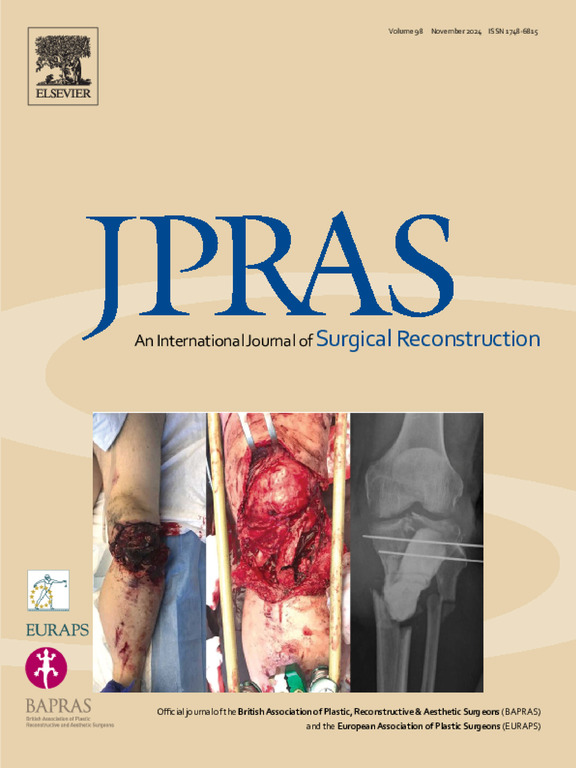Exploring breast implant illness and its comorbid conditions: A systematic review & meta-analysis
IF 2
3区 医学
Q2 SURGERY
Journal of Plastic Reconstructive and Aesthetic Surgery
Pub Date : 2025-03-12
DOI:10.1016/j.bjps.2025.03.026
引用次数: 0
Abstract
Introduction
Despite growing interest, there is scarce literature that describes the comorbid conditions and presenting symptoms that can manifest with or potentially as breast implant illness (BII). This review aims to address this gap.
Methods
A systematic search was conducted on September 24, 2024, using EMBASE, PubMed, Scopus, Web of Science, and Google Scholar. Inclusion criteria required the exploration of BII in relation to autoimmune disorders in peer-reviewed original research. Two investigators independently conducted the screening, extraction, and analysis.
Results
Of the 1362 reports identified, 48 articles were selected for analysis. These studies were conducted globally and included 7045 patients with breast implants (bilateral or unilateral). Of these, 3444 patients (49%) presented with the constellations of symptoms often classified as “breast implant illness.” 2425 patients (34%) reported complaints of arthralgia and/or myalgia, 1477 patients (21%) reported cognitive dysfunction such as brain fog and/or loss of concentration, and 1685 patients (24%) reported fatigue and/or malaise. Additionally, 409 patients (6%) had a diagnosed comorbid autoimmune condition, while 1005 (14%) had a history of former or active smoking. Significant associations were found between likelihood of reporting BII, history of malignancy, likelihood of undergoing explantation, and symptom improvement or complete resolution postexplantation.
Conclusion
Among the patients that presented with one or more symptoms of BII, 51% had other explainable diagnoses or etiologies for their symptoms that precluded the diagnosis of BII. These findings highlight the need for more research into BII etiology, diagnosis, and management and improved patient education and follow-up protocols.
求助全文
约1分钟内获得全文
求助全文
来源期刊
CiteScore
3.10
自引率
11.10%
发文量
578
审稿时长
3.5 months
期刊介绍:
JPRAS An International Journal of Surgical Reconstruction is one of the world''s leading international journals, covering all the reconstructive and aesthetic aspects of plastic surgery.
The journal presents the latest surgical procedures with audit and outcome studies of new and established techniques in plastic surgery including: cleft lip and palate and other heads and neck surgery, hand surgery, lower limb trauma, burns, skin cancer, breast surgery and aesthetic surgery.

 求助内容:
求助内容: 应助结果提醒方式:
应助结果提醒方式:


